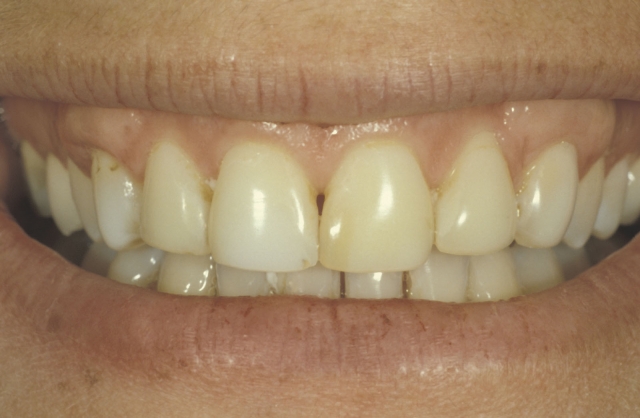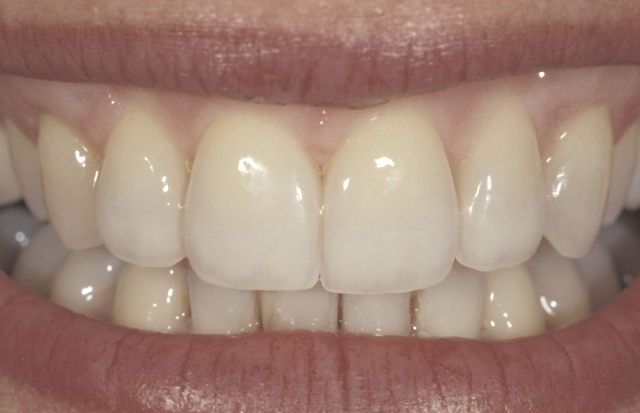Glass Ceramic Bonding: 3 Commonly Asked Questions

A key to long-term success of a bonded ceramic restoration is the conditioning of the internal surface of the restoration. This article will address commonly asked questions related to cleaning, etching, and conditioning glass ceramic restorations.
Why clean restorations?
After the intraoral try-in of the restoration, it is recommended that you clean the intaglio surface to remove salivary and blood proteins that adhere to the ceramic. These proteins negatively affect the composite bond strength to the ceramic. No cleaning or cleaning with 70% ethanol has the same effect of decreasing the bond strength by approximately 50%. Steam cleaning is frequently used to clean restorations, but I was unable to find any research evaluating the effectiveness of steam cleaning to remove salivary or blood contaminants. Ivoclean (Ivoclar Vivadent) is the only specific cleaning agent on the market. The most common approach to clean glass ceramic has been the use of 37% H3PO4. This should not be used on zirconia.
Cleaning with 37% H3PO4 and then applying a silanating agent such as Monobond Plus (Ivoclar Vivadent) establishes almost as strong shear bond strength as Monobond Etch & Prime. Monobond Etch & Prime contains ammonium polyfluoride acid, which acts as a cleaning agent, so there is no need to use H3PO4. If silicone is used as a medium for try-in (silicone impression material or Mock Slow), the remnants of silicone on the ceramic surface are difficult to remove and the result is a weaker adhesive bond.

Cleaning glass ceramic after silicone has been applied can only be achieved with hydrofluoric acid (HF). If e.max lithium disilicate is etched with HF before the try-in procedure, and HF acid is used to clean the surface, the result is an over-etched surface. This decreases the bond strength of the resin to the ceramic. In addition, a decrease in mechanical properties can be observed after over-etching. Therefore, if you prefer to use a silicone material as a try-in material, my recommendation is not to etch with HF acid before the try-in procedure. Only etch afterward.
Why etch?
Etching the ceramic surface creates a microretentive surface, increases the surface area, and creates a highly reactive surface for bonding. Monobond Etch & Prime uses ammonium polyfluoride acid to etch the ceramic. Per Ivoclar Vivadent, key attributes of this acid are that it is safer than HF when contacting the skin and is more forgiving if the glass ceramic surface is treated more than one time.
Previously, the acid used to etch the intaglio surface of e.max restorations was 5% HF for 20 seconds. Lithium disilicate should never be etched a second time with 5% HF. Over-etching can negatively affect the bond strength of the composite to the ceramic. If you choose to use a stronger acid, such as the 9–9.5% HF typically used for feldspathic ceramic, use extreme caution with the time the etch is in contact with the ceramic surface, because over-etching will more readily occur.
Why condition?
Silane is applied to the surface of the ceramic, which results in a stronger chemical bond between the glass ceramic and the silane methacrylate. Silane coupling agents are found in products like Monobond Plus and Monobond Etch & Prime. These products are applied to only the intaglio surface of the restoration for 60 seconds. Monobond Plus should be allowed to air-dry, and Monobond Etch & Prime is to be thoroughly rinsed and then air-dried, per the product brochure. Do not allow it to contact the outer surface of the restoration. If it contacts the outer surface, the adhesive and resin cement will bond to this surface. Monobond Etch & Prime can be used with all methacrylate-based luting composites and all glass ceramics.
After Monobond Plus is applied to the ceramic surface and dries, it remains active for at least seven days; they have not tested how long Monobond Etch & Prime is active. Ivoclar Vivadent test results show an increase in resin bond strength in the Monobond products compared with other silanating agents. Universal adhesives also contain silanating agents, but there is some uncertainty regarding the effectiveness of these agents, especially after aging.
During a recent lecture I attended, Dr. John Burgess recommended applying silane to the ceramic before you try in a restoration, because it makes the intaglio surface easier to clean. Ivoclar Vivadent in its product brochure, states that saliva and blood will contaminate a surface conditioned with primer that contains a silane coupling agent, so don’t use this product as a productive coating for easier cleaning. Applying Monobond Etch & Prime after the try-in procedure will clean, etch, and then prime the ceramic surface in one step.

The most important consideration when bonding a glass ceramic restoration is to follow the manufacturers’ recommendations for any product you use.
If you’re interested in reading some of the research on this topic, please see the attached poster presentations:
- Effect of Storage on Shear-Bond Strength of Self-Etch Ceramic Primer
- Effect of Surface Treatment on Biaxial Flexural Strength of Lithium Disilicate
- Effect of Surface Treatment of Lithium Disilicate on Shear-Bond Strength of Resin Cements
- Shear Bond Strength of Ceramic Primers with Lithium Disilicate
VIRTUAL SEMINARS
The Campus CE Experience
– Online, Anywhere
Spear Virtual Seminars give you versatility to refine your clinical skills following the same lessons that you would at the Spear Campus in Scottsdale — but from anywhere, as a safe online alternative to large-attendance campus events. Ask an advisor how your practice can take advantage of this new CE option.

By: Robert Winter
Date: August 31, 2016
Featured Digest articles
Insights and advice from Spear Faculty and industry experts


